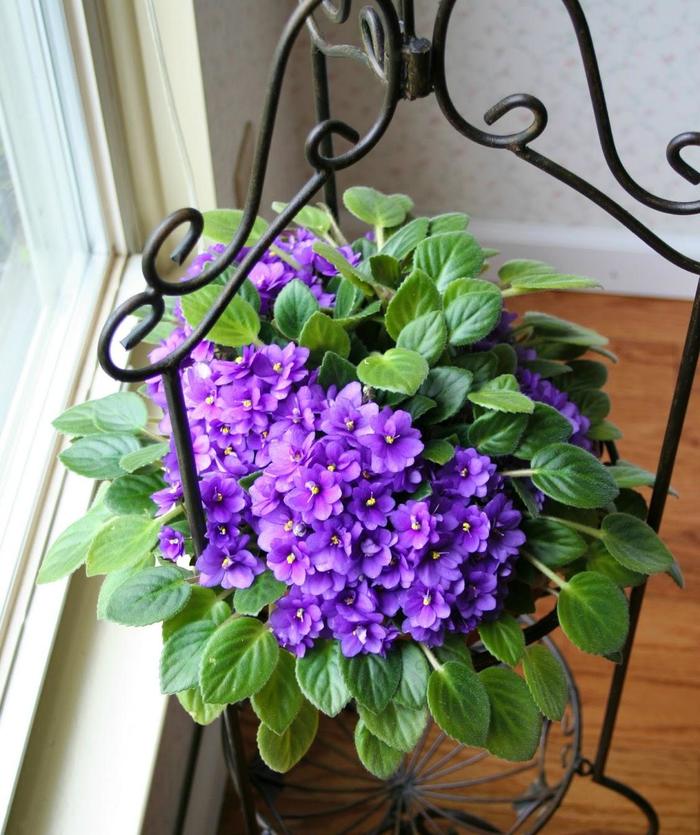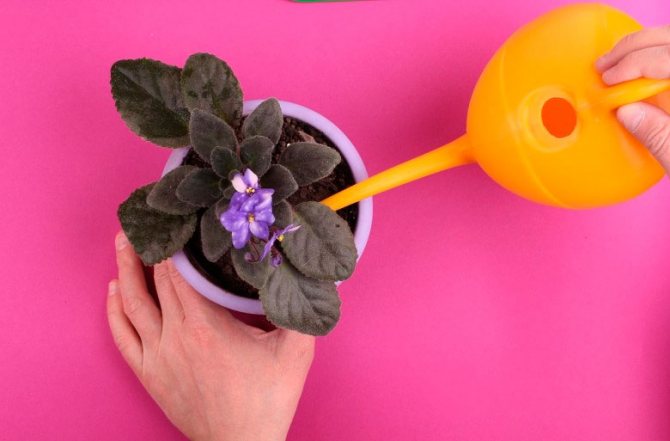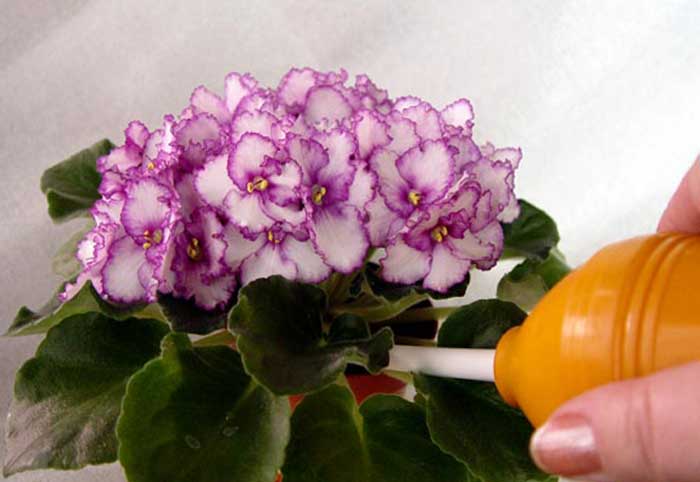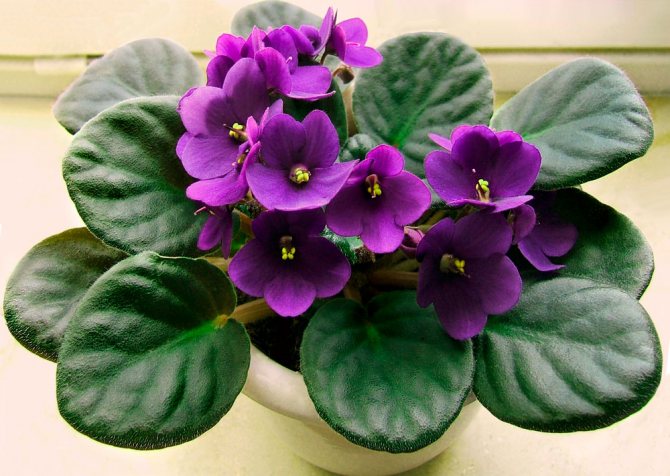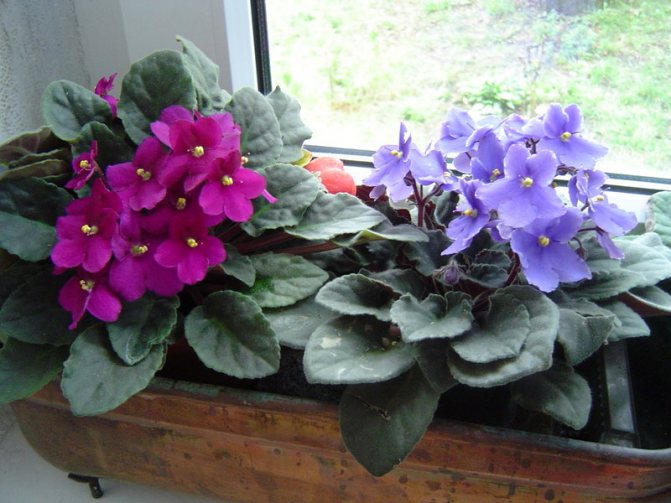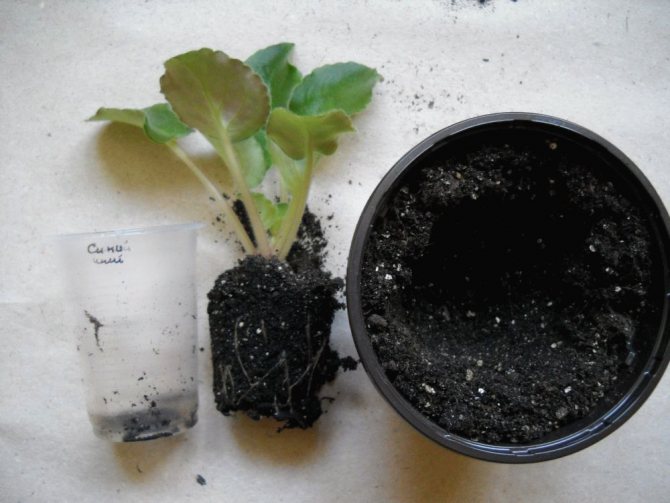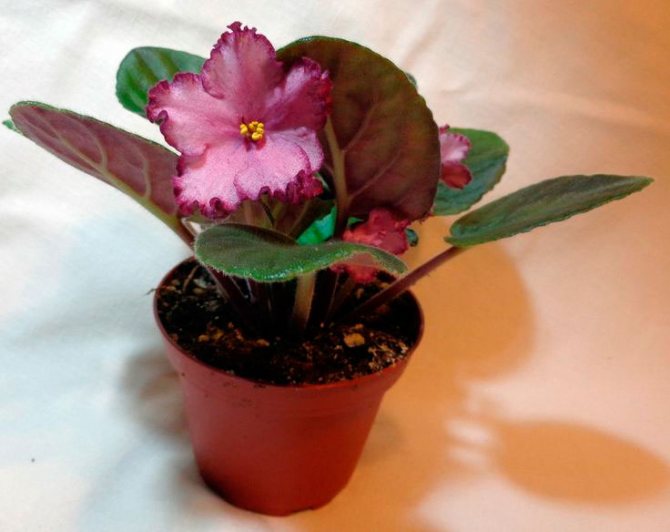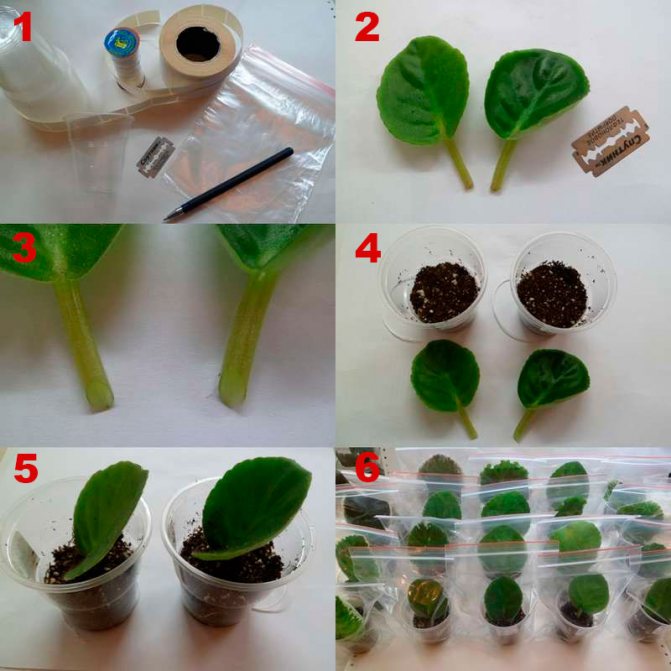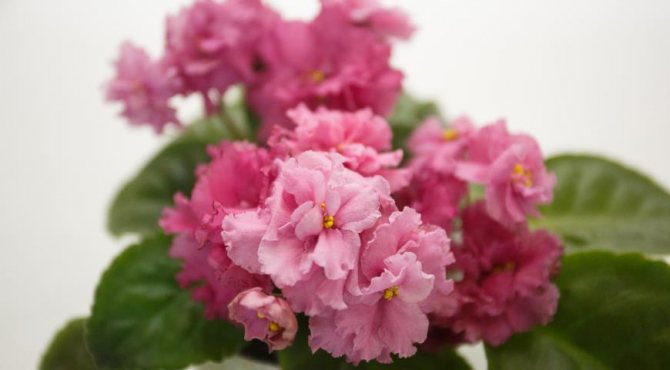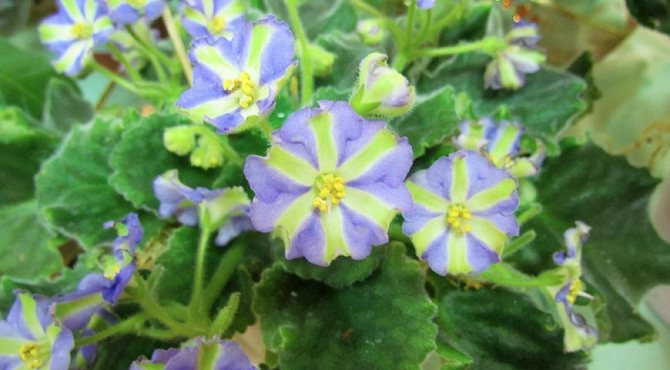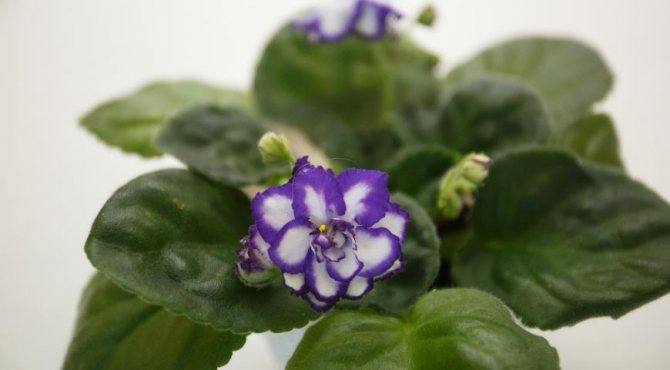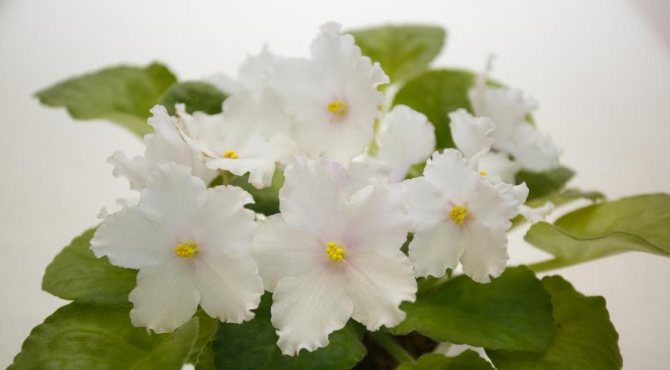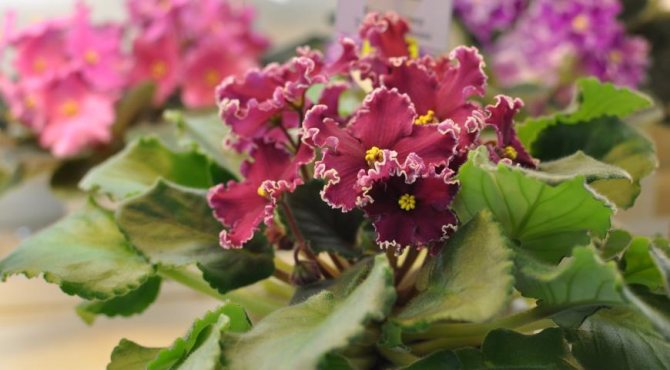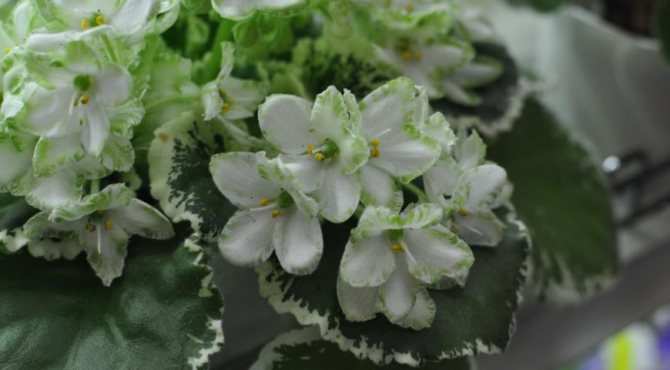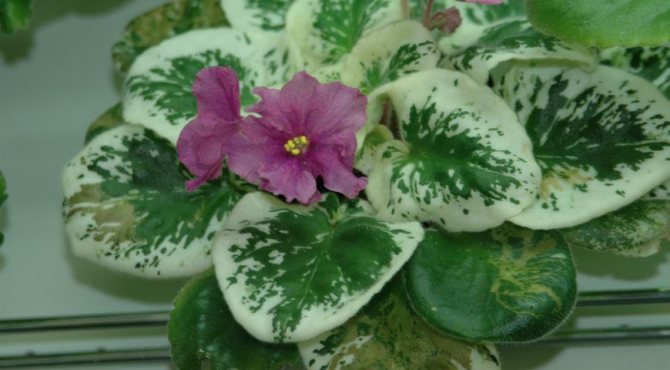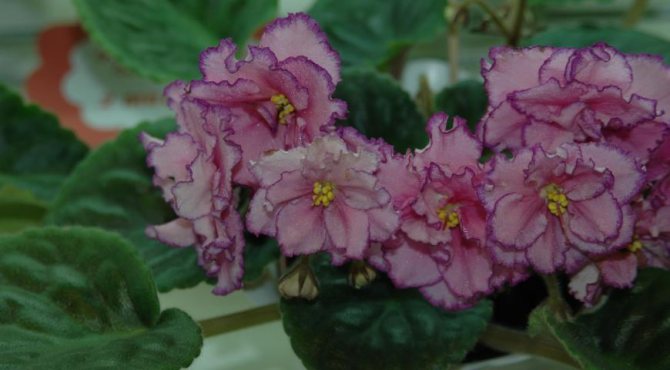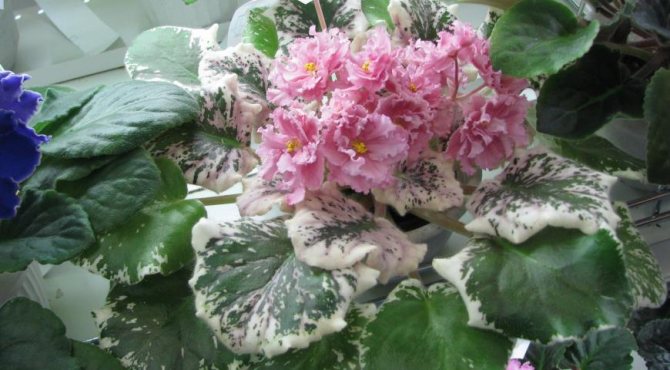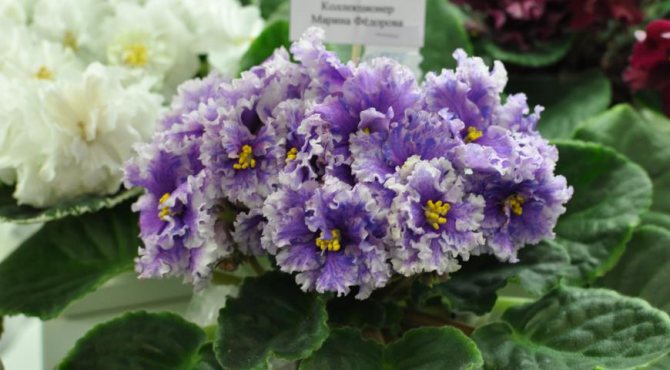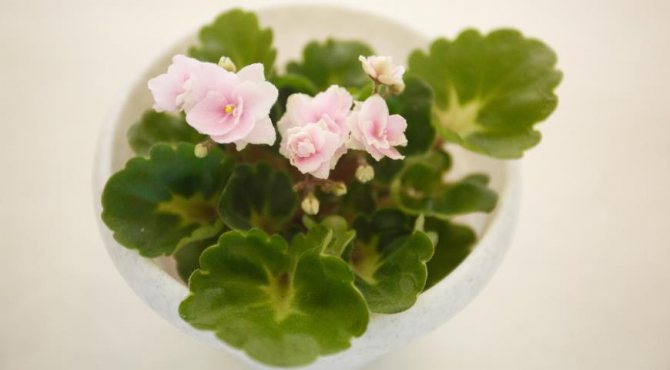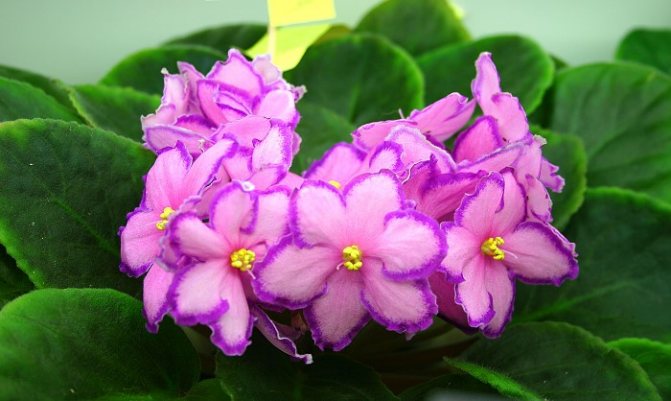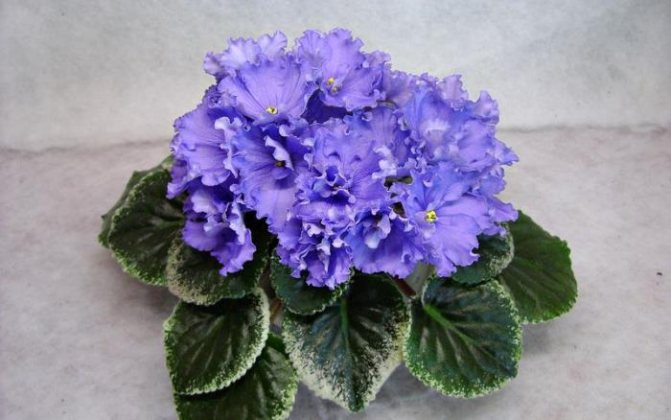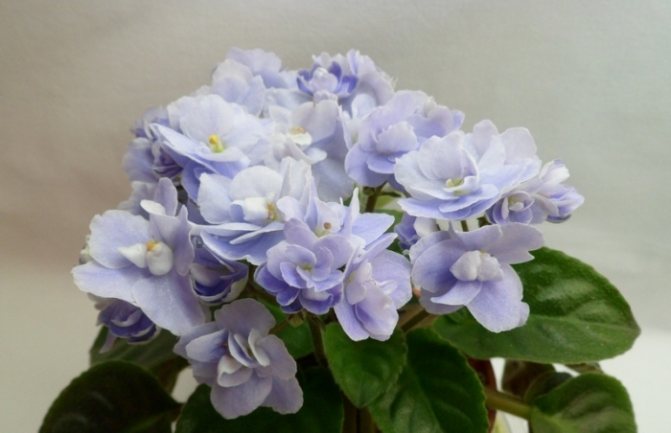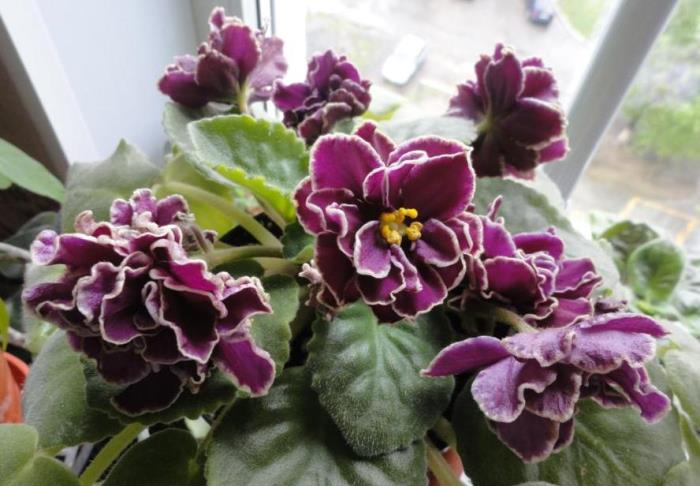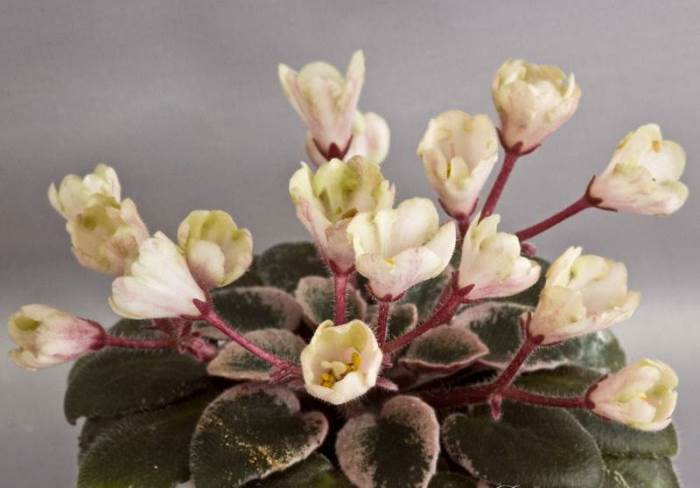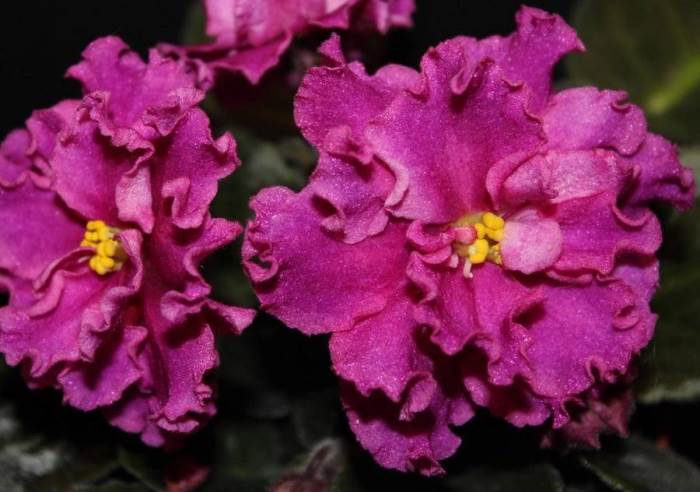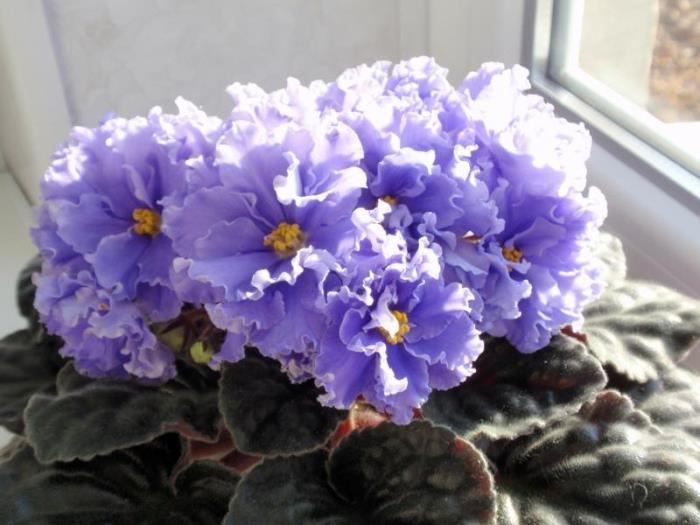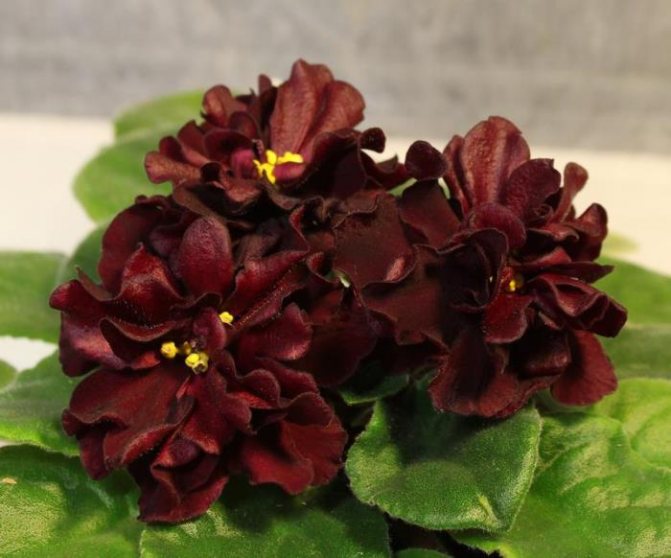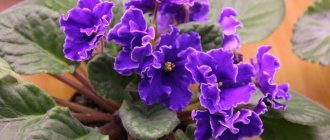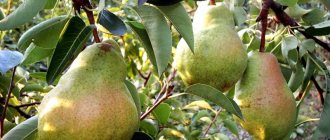Florists first noticed wild Saintpaulias at the end of the 19th century. They were brought to Europe from East Africa. Then the German botanist Hermann Wenland described the plants and singled them out as a separate genus. Immediately after that, the Uzambara violet was presented at an international flower show in the Belgian city of Ghent. From that moment, active selection of culture began.
All representatives of the genus Saintpaulia are herbaceous perennials. Plants are stunted and compact: the height of the specimens does not exceed 20 cm, the diameter is 35-40 cm. Leathery rounded leaves are pubescent with small villi. The base of the plates is cordate, asymmetric. Their color can be uniform (dark green) or spotted.
Saintpaulia is fast growing. Life expectancy is 3-4 years, then decorative qualities are lost. Such specimens are rejuvenated by re-rooting the apex. The uzambara violet blooms almost continuously.
| Growing rapidly. |
| Blooms from late spring to early autumn. |
| The plant is easy to grow. |
| Up to 4 years, then you should rejuvenate. |
Useful properties of Saintpaulia
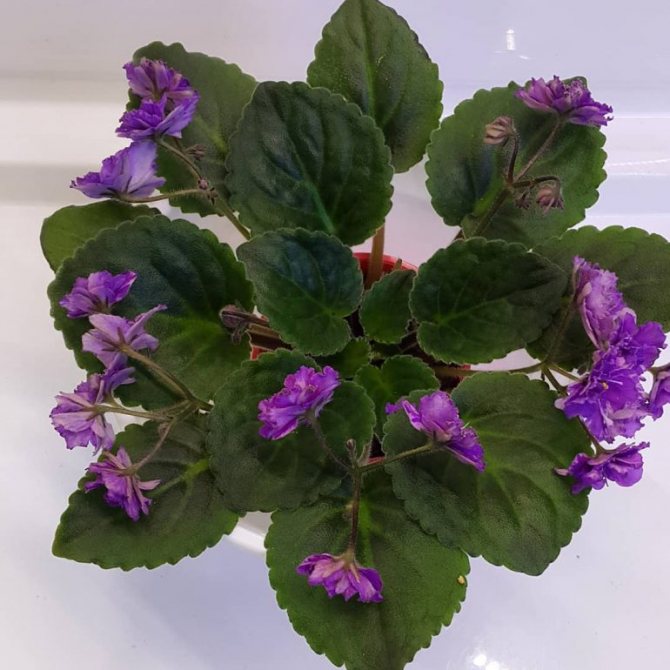
Preparations from the plant are added to cosmetics: they are able to relieve irritation, heal small cracks in the skin, and increase its elasticity. Leaf plates are used to treat acne. Essential oil is used by perfumers to create fragrances. A decoction of violets helps with bronchitis, sore throat, atherosclerosis.
The origin of the beauty
This small plant belongs to the Gesneriev family, the homeland of wild Saintpaulia is located in eastern Africa - in Kenya and Tanzania, in the Usambara (Uzambar) mountains. It was in Africa in 1892 that beautiful flowers were seen by the German Baron Saint-Paul (or Saint-Paul), who at that time was the military commander of the African colony of Germany, which occupied the lands of Rwanda, Tanzania and Burundi.
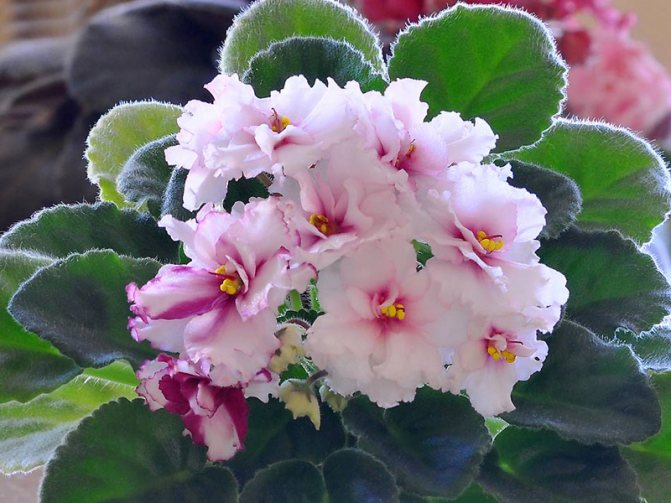

The baron sent the seeds of the plant to his father, who gave them to the botanist Wendland, director of the Hanover Botanical Garden. It was Hermann Wendland who grew plant specimens from seeds, described them as a new species of Saintpaulia violet-flowered, and singled out Saintpaulia as a separate genus. A year later, in 1893, Saintpaulia was presented in Ghent at the international flower exhibition, after which the Benary company acquired the right to its industrial cultivation. Gradually, the beauty won the sympathy of flower growers and breeders all over the world, and by 1949 more than 100 varieties of violets were already known. Today the number of varieties and hybrids is in the thousands. In some countries this plant is called "African violet".
Caring for Saintpaulia at home. Briefly
The culture has established itself as unpretentious. If you have basic skills, even a novice florist will be able to grow it. In order for Saintpaulia to feel comfortable at home, a number of parameters must be observed.
Basic requirements (memo):
| Temperature | In winter, it should be at least 19 ˚C, in summer - about 22-25 C. |
| Air humidity | 55-65%, however, it is impossible to irrigate the leaves from a spray bottle (to increase the indicator, the pots are placed on expanded clay, which is then sprayed with water). |
| Lighting | Moderate, placement on northern windows is acceptable. |
| Watering Saintpaulia | Depending on the season of the year (in the summer the soil is moistened daily, in the winter - once every 4 days). |
| Priming | Well drained, specially designed for violets. |
| Top dressing and fertilization | Only in the warm season (once every 2 weeks). |
| Transfer | Annual (in spring) with complete soil replacement. |
| Reproduction of Saintpaulia | It is carried out with an apical cuttings, air layers and parts of the stem, so that several buds are present on it. |
| Features of the | Ease of reproduction (by cuttings, "children", seeds), the possibility of obtaining new varieties with an unusual color of petals by artificial pollination. |
The advantage of the uzambara violet is that there is no need for pruning. The procedure is resorted to if weak leaf plates have appeared on Saintpaulia, in case of mechanical damage, and also in order to obtain new plants.
How to achieve nodding flowering
In fact, absolutely anyone can grow a violet, even a child. I work as a teacher and have grown violets with children more than once. But, of course, like any plant, violets must be looked after.
We are all most interested in how to achieve a nodding flowering, exactly the same as we saw in beautiful photos on the Internet, at exhibitions. Most of the people who begin to deal with violets are absolutely sure that it is all about the magic fertilizer with which collectors of violets water their plants, and this secret is carefully hidden. This is another myth, there is no such fertilizer. For nodding flowering, various factors are needed in combination - light, soil, watering, temperature, fertilization - and in that order. Let's consider them in more detail.
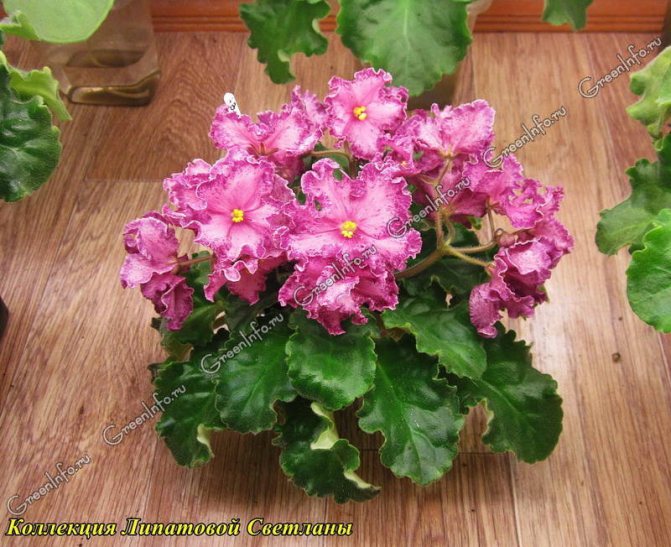

Saintpaulia AB - Mexican Tushkan
Caring for Saintpaulia at home. In detail
Many growers make collecting items as their hobby. New varieties of crops are being bred almost constantly, there is even a fashion for some hybrids. What is necessary in order for the home Saintpaulia to continuously delight the owner with the appearance of new spectacular buds? Let's take a closer look at the plant's microclimate requirements.
Flowering saintpaulia
The intensity of the process is regulated by changing the level of illumination. With a large amount of sunlight, the Uzambara violet is capable of constantly releasing buds. However, this is fraught with depletion of the plant. Therefore, it is recommended to move the pot to a shaded place once a year for 1.5-2 months to provide Saintpaulia with rest.
The variety of varieties does not allow for an unambiguous description of the appearance of the crop. There are both hybrids with simple flowers, consisting of 5 petals, and specimens with double buds. They can be monochromatic or combine several shades.
Temperature regime
Saintpaulia flower at home prefers warmth. In summer, the room temperature should be 22-25 ˚C, in winter - about 19 ˚C. The plant reacts poorly to excessive heat: during such periods it can completely stop flowering.
Usambara violets should not be taken out into the open air. In the warm season, it is allowed to move the pots to a glazed loggia or balcony. In this case, it is necessary to ensure that the Saintpaulia is protected from drafts.
Spraying
The culture loves humid air. However, pubescent leaf plates do not tolerate water ingress on them. Therefore, it is impossible to irrigate the plant from a spray bottle: this will lead to its decay.
To maintain the parameter at a level of at least 55%, it is necessary to place containers with flowers in trays filled with moistened sphagnum or small expanded clay. In this case, you cannot remove the saucers on which the pots are installed. You can purchase an industrial humidifier and turn it on periodically.
Lighting for Saintpaulia
For violets, placement on the southern windows is contraindicated. Sheet plates in such conditions will bend outward and curl.The plant develops best when located on the west or east side. The optimal daylight hours are 12 hours.
Saintpaulia is shade-tolerant, so it can bloom safely even on the northern window. If with such a localization of buds, few appear, an additional light source (phytolamp) should be installed.
If you have the appropriate equipment, you can grow Saintpaulia at home even in the depths of the apartment.
If the leaf petioles are stretched, and the plates themselves take a vertical position, the intensity of the illumination should be increased.
Watering
To moisturize, use soft water at room temperature that has settled for 3-4 days. Some growers prefer thawed or filtered. In summer, the procedure is carried out every day, in winter - 2 times a week.
The substrate is watered when its surface is completely dry. This can be done in two ways: with a small watering can or by placing the pot in a container of water for 20-25 minutes. In the first case, you need to ensure that drops do not fall on the leaves. It is important to avoid stagnation of moisture in a container with a flower.
Soil for Saintpaulia
To prepare the soil, you need to mix:
- 1 part coarse sand;
- 3 parts of peat;
- 5 parts of leaf humus.
You can buy ready-made substrate in the store.
Universal formulations for growing Saintpaulias will not work. It is necessary to choose special soils for violets.
Top dressing and fertilization
In its natural environment, the plant lives on depleted soils, which contain few nutrients and trace elements. Therefore, it is impossible to get carried away with fertilizing. In winter, the procedures are suspended, resuming at the end of April. Avoid fertilizing violets with mixtures with a high nitrogen content.
For Saintpaulias, the Kemira-Lux remedy is suitable. When diluting the drug, add 2 times more liquid than is required according to the instructions. Top dressing is applied once every 2-2.5 weeks. You can not use such organic fertilizers as "meat" water, tea leaves: this contributes to the appearance of leaf mosquitoes on the substrate (sciarid).
Saintpaulia transplant
For a young plant, a container with a diameter of 6-7 cm is suitable, for an adult - about 12 cm. If you use too large dishes, the intensive development of the root system will begin, which will negatively affect the flowering. The procedure is carried out once a year, completely renewing the substrate. A medium-sized layer of expanded clay is laid at the bottom of the pot.
The soil lump is carefully separated from the walls of the container, then the plant is removed. The roots are freed from the remnants of the earth, rotted fragments are removed. If the specimen shows signs of the disease, you can immerse the roots in a solution of potassium permanganate for 5-7 minutes.
Pruning
Caring for Saintpaulia at home includes regular preventive examinations of the aboveground parts. Dried or mechanically damaged leaves are immediately cut off with a sharp disinfected instrument.
Some growers remove "extra" plates to make the plant look symmetrical. In other cases, Saintpaulia does not need pruning.
Dormant period
The Uzambara violet is an evergreen perennial. She never sheds leaves, so she does not have a pronounced dormant period. Saintpaulia has only short breaks between flowering phases. At such times, you can provide shading to the culture and slightly reduce watering: thanks to this, more buds will subsequently form.
Shine
For full bloom, violets need good diffused light, i.e. all windows are suitable for them, except for the southern one (most often the diffused light on such a window will not work, and the violets will stand with damaged leaves). For lush flowering, violets need at least 10 hours of daylight. And such a daylight occurs in spring and autumn, at this time the most beautiful flowering is obtained.That is why, at a certain stage, many violets acquire racks in order to be able to independently adjust the length of daylight hours.
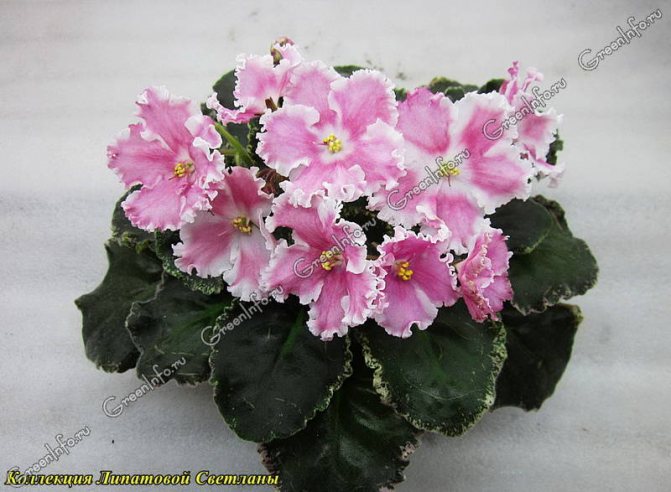

Saintpaulia RS - Elixir of Beauty
Reproduction of Saintpaulia
There are several ways to get new copies.
Propagation of Saintpaulia by leaf cuttings
With the help of leafy cuttings. To do this, the plate is cut with a sterile knife together with the petiole, leaving a length of 4-5 cm. The wound is sprinkled with crushed activated carbon. The powder is also added to water, into which the plant fragments are then placed (1 tablet per glass of liquid). The first roots will appear in 2.5-3 weeks. After that, the cuttings are planted in small pots and covered with polyethylene for 1-2 weeks.
Growing Saintpaulia from seeds
Seeds. The original plants are selected that do not show signs of disease. Then artificial pollination is carried out with a soft brush. To do this, the pollen from one specimen is transferred to the pistils of another. The capsules will fully ripen in about 4 months. To plant the extracted seeds, the top layer of the soil is moistened. The material is mixed with sand and spread over the soil without dusting. The dishes are covered with glass and placed in a warm place. The pick is carried out when the rosettes are sufficiently developed.
Reproduction by pinching
Stepsons. In order for them to appear, the growth point is removed from the plant. After a while, daughter shoots grow. When they reach 4-5 cm in diameter, they are separated and placed in individual containers.
Temperature
On the Internet, information is often found that the ideal temperature for violets is from + 18 ° C to + 25 ° C. In practice, I can say that it never happens below + 30 ° C on my shelves. Well, I don't have an ideal temperature in my apartment, but at the same time I even manage to participate in exhibitions. Conclusion: violets are so tenacious that even + 30 ° C is a very suitable temperature for them.
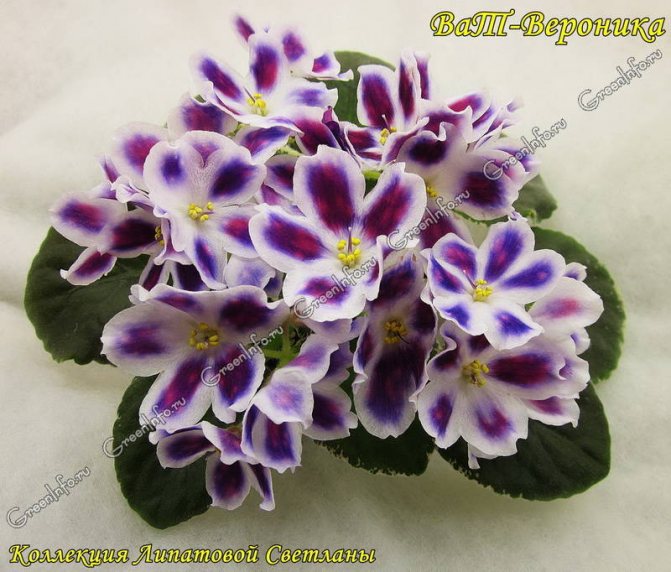

Saintpaulia VaT - Veronica
Diseases and pests
Saintpaulias are not highly resistant to ailments. However, with proper prevention, they can be completely saved from adversity.
Insects and arachnids
The type of pest is determined by the characteristic symptoms (signs).
The most common:
- white cotton-like bloom on the cuttings Saintpaulia appears when affected by mealybugs;
- fast drying flowers and yellow pollen on leaves observed when attacked by California thrips;
- the upper leaves of Saintpaulia roll up, and the villi on the plates lengthen, if cyclamen mites have settled on the plant.
To eliminate parasites, insecticides are used. In the latter case, biological or chemical acaricidal drugs can help.
Diseases
The reason for such conditions often lies in improper care. Most often, flower growers observe on violets:
- Saintpaulia does not bloom - due to excess nitrogen in the soil or lack of lighting;
- spots on Saintpaulia leaves - as a result of watering with cold water, exposure to drafts, direct sunlight;
- decreased leaf turgor - with waterlogging or drying out of the substrate;
- wilting of unopened buds - due to a decrease in air humidity;
- chopping the central leaves of the rosette - with dry air or excess lighting;
- dry edges of Saintpaulia leaves - as a result of rare dressings;
- white bloom on aerial parts Saintpaulia - in case of fungal infection ("powdery mildew");
- yellowing or reddening of the leaves - as a result of a lack of nutrients;
- leaf decay - due to the multiplication of late blight pathogens or gray rot.
Instances should be inspected daily for symptoms of ailments. If such are identified, treatment is immediately started to avoid the death of the plant.
If you need to go on vacation
It is not recommended to leave Saintpaulias for more than two days.Assuming a long absence, you need to ask someone to periodically water the substrate and control the humidity level in the room. Care should also include timely fertilization.
If there is no assistant, and departure is inevitable, you can equip the pots with a wick irrigation system.
Varieties of uzambar violets
Violets quickly conquered the hearts of flower growers and gained immense popularity all over the world. Currently, more than 32 thousand varieties of this magnificent indoor plant have been bred. It is especially pleasant that more than 2 thousand varieties were created by our compatriots.
Modern violets are conventionally divided into 3 main sizes: miniature with a rosette diameter up to 15 cm, semi-miniature (15-20 cm) and standard (20-40 cm). Violet leaves come in different shapes and colors: oval, elongated, heart-shaped, with a wavy edge, plain green or variegated with a white pattern.
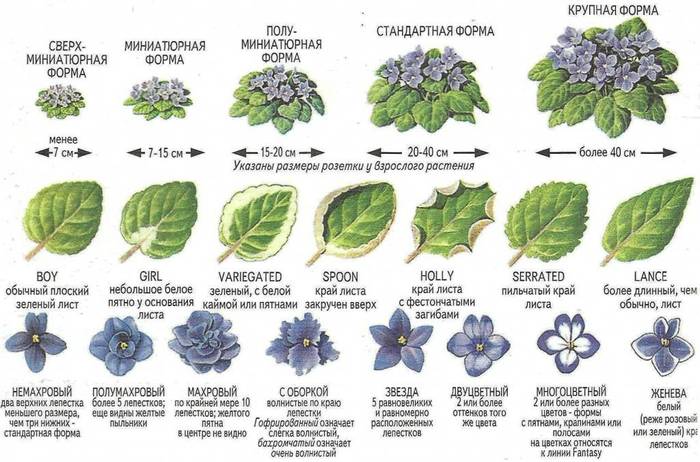

Fashionable trailer varieties of violets have several growth points instead of one rosette of leaves. They are lush bush or ampelous, with hanging shoots up to 50 cm long.
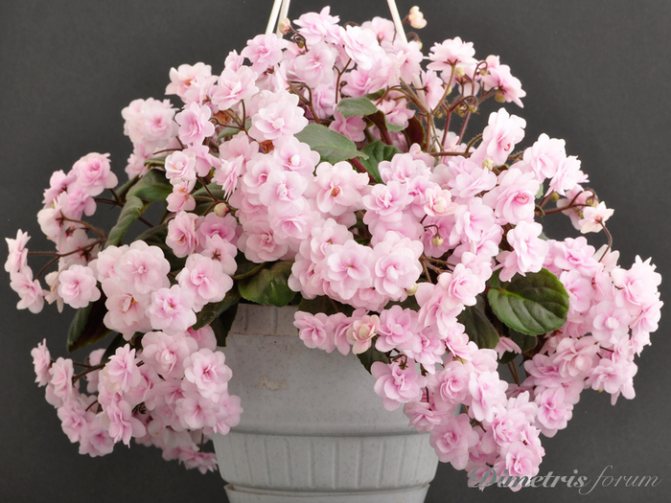

And, of course, the flowers of different varieties can be very different in color, size and shape: blue, lilac, purple, blue, white, pink, red, crimson, monochromatic, with a peephole in the center, two-color with stripes (“chimeras "), Two-color with spots (" fantasy "), with edging of petals in a different color (" fringed "), simple flat, semi-double or double, star-shaped with elongated petals (" stars ").
The beauty of violets in home culture, in addition to their delicate charming appearance and huge variety, also lies in the constant flowering with rare short interruptions. In fact, this is a lively neat bunch that will look the same all the time. The flowers bloom and gradually fade, replacing each other, and the violet always looks elegant and attractive. Compositions of several violets of different colors, placed in one common pots or a beautiful basket, look especially impressive.
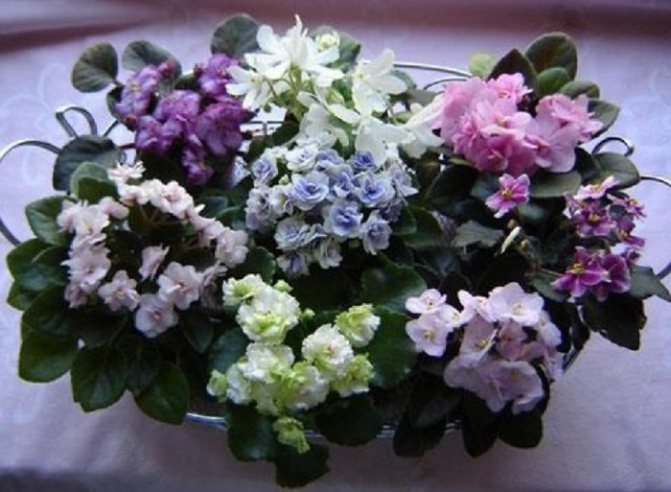

To successfully cultivate these wonderful, unpretentious plants in home culture, you must follow a few simple rules, which we will tell you in detail about.
Types of homemade Saintpaulia
Due to the variety of varieties, the choice of violets in flower shops is very wide. Consider the most popular types today.
Blue Dragon
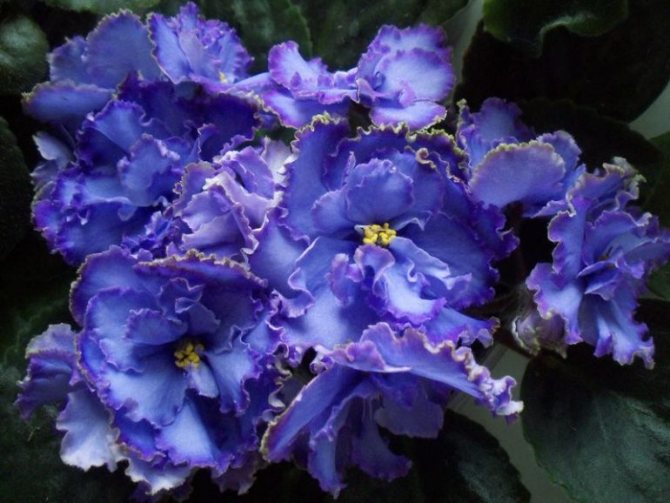

The hybrid has a powerful large outlet. Leaves are solid, deep green. The edges of the plates are serrated, their underside is reddish. Semi-double flowers, bluish-purple petals have corrugated edges.
Midnight Frolik
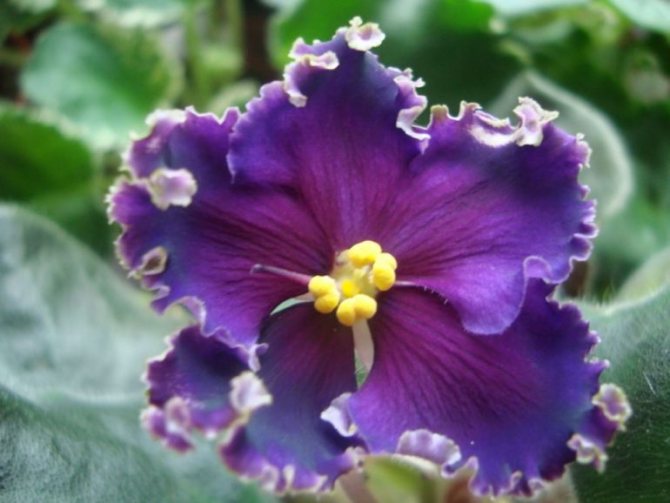

Variegated variety: green plates with white blotches along the edges. The loose rosette reaches a diameter of 40 cm. The leaf petioles are long. The hybrid blooms only at 2-3 years of age. The petals are purple-lilac.
Midnight Twist
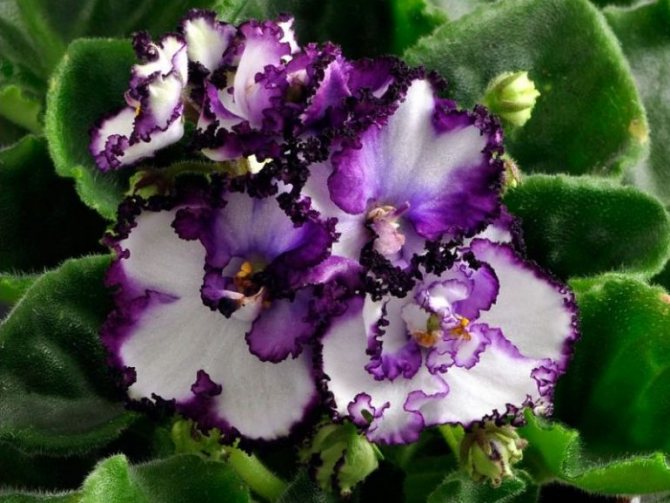

Violet with corrugated semi-double flowers with a purple border. The foliage is plain, green. The neat outlet is compact and tight. The variety has a very lush and long flowering.
Kissing Bandit
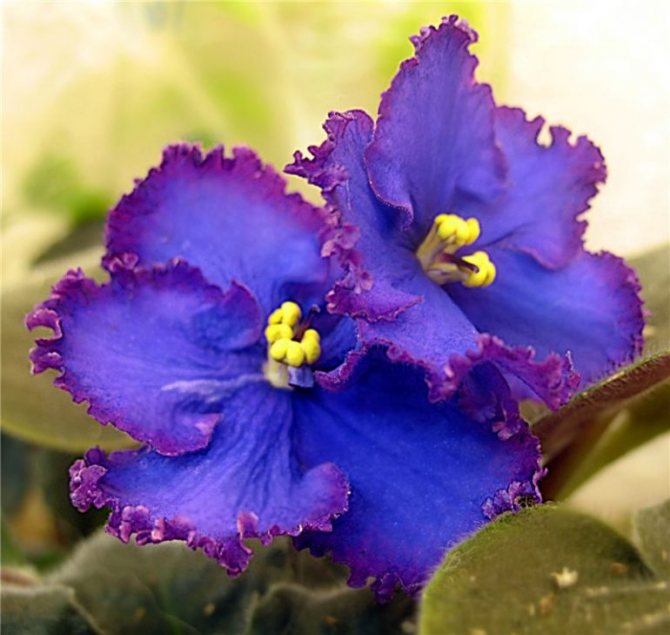

The flowers of the hybrid are double or semi-double, lilac-blue. The open buds reach 6 cm in diameter. The foliage is shiny, dark green. The rosette is large, spreading.
Harry Potter
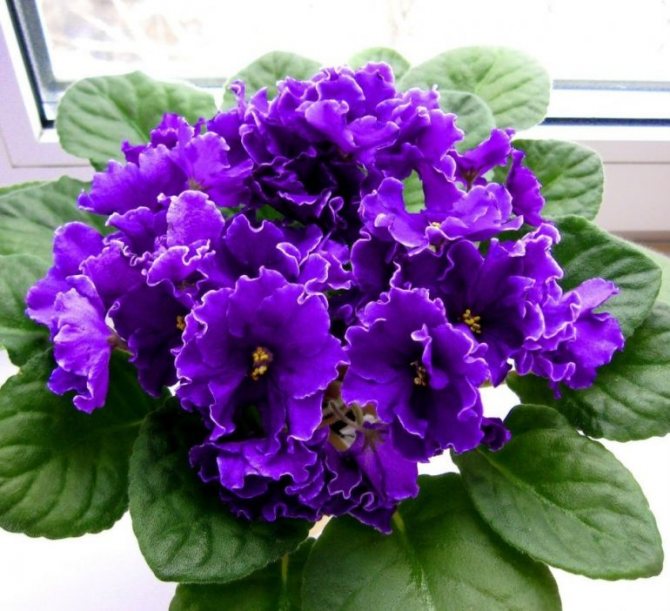

The foliage is green, "quilted", the rosette is neat and compact. The purple petals are edged with a white border. The lifespan of each flower is about 2 months.
Cupidon
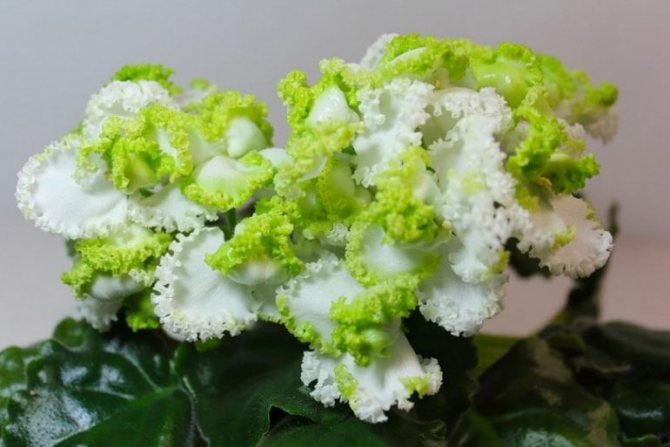

The flowers of the hybrid are double, the petals are white or pinkish, their edges are greenish-lemon. Plates are monochromatic with slightly wavy edges. The socket is large and neat. The variety is characterized by early flowering.
Breath Thunderstorms
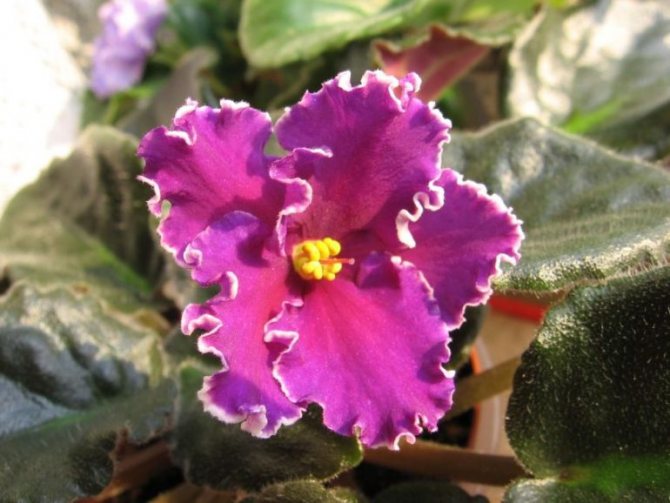

The buds of the hybrid are very large, the petals are burgundy closer to the core, purple along the edge, the terry edging is white. Flowering is not plentiful, but long lasting. The leaves are dark green, slightly wavy.
Having studied the requirements of uzambara violets for care, it is easy to avoid common mistakes. When creating the right microclimate and timely prevention of ailments, this plant will delight you with beautiful flowers almost all year round.
The pot is 3 times smaller than the plant
This is a very important point. It is best to root violets (leaves) in 100-gram cups. This volume allows for faster root growth. If you take a container of a larger volume, then the soil can sour, the roots can rot, and the children will not appear at all. We also raise children in 100-gram cups until the diameter of the rosette is 3 times the diameter of the cup. This is the golden rule of violets - the diameter of the rosette is 3 times the size of the pot.
We transplant it into a pot, which is no more than 8-9 cm in diameter and again grow in such a pot until the socket becomes 3 times the slide in diameter. If it fits into these parameters, then we have found the ideal pot for this plant, and we no longer increase the pot.
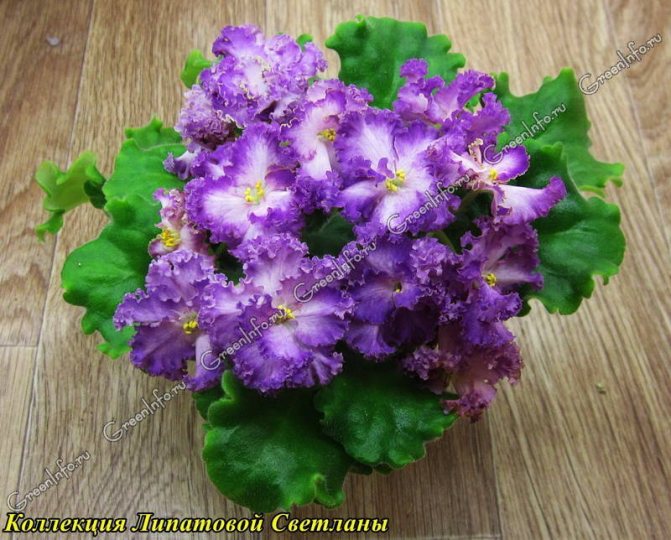

Saintpaulia LE - Flower Fairy
What if the plant has hung leaves? Water barely if the soil is completely dry. After 2 hours, pour another drop, and only the next day, pour as usual. If everything has been done, but the leaves have not restored the turgor, then the plant needs to be urgently re-rooted (the roots have already died).
Fertilizers
For successful growth, the uzambar violet does not require special fertilization. It can only be added for a longer flowering period. The amount of recharge should always be strictly limited, since an excess of it can ruin the Saintpaulia.
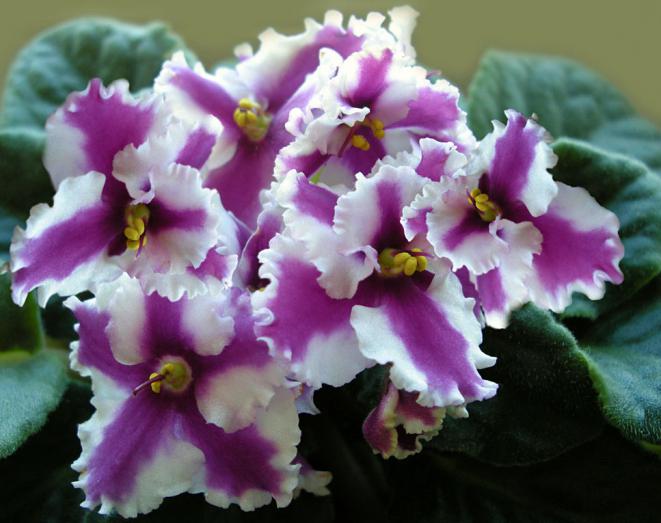

Nutrition for violets can be universal, which is suitable for all flowering plants, only the concentration should be made 3-4 times less. Fertilizing the flowerpot should be no more than once a month during the flowering period. Never add food to the plant for two months after transplanting.
Watering frequency
The Uzambar violet, the photo of which is located below, prefers peat soils. Therefore, moisture leaves the flowerpots quickly enough. Without enough water, Saintpaulia will wither quickly. But this does not mean that you need to water the flower non-stop. Excessive moisture, as well as the ingress of water into the leaf outlet, will lead to rotting of the plant.
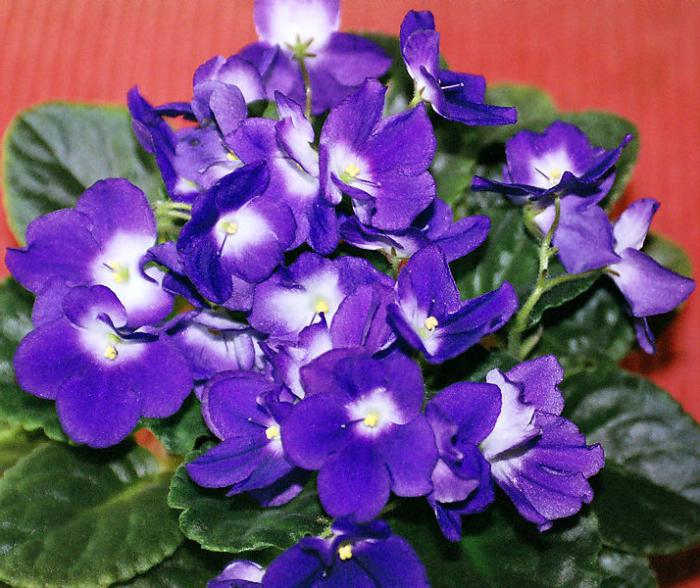

The best watering methods are to add water to the sump or to dip it briefly in a small bowl. If you use the first option, then a thread should pass from the roots of the violet to the cup, which will absorb moisture. It is especially important that the water for the Saintpaulia is at room temperature.



